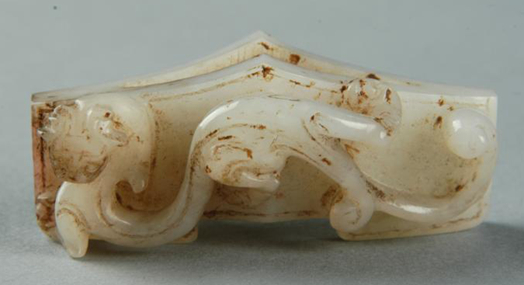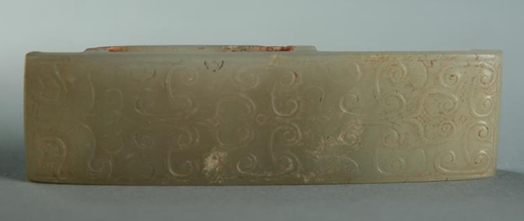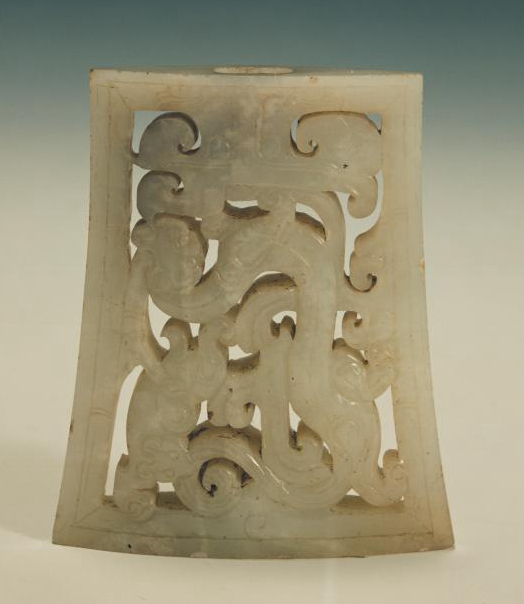
Shou pommel: Diameter 5.2 cm, Thickness 0.6 cm

Ge guard: Length 5.8 cm Width 2.6 cm

Sui scabbard slide Length 9.5 cm Width, 2.5 cm, Height 1.5 cm

Bi decorations of sheath: Length 7.7 cm, Upper Width 5. 1cm,
Lower Width 6.5 cm, Thickness 1.2 cm
Western Han (206 BC--AD 25)
Acquired from another collection
Excavated at the Xishan Han tombs, Yongcheng, Henan Province, 1986
The shou is oblate in shape, with some brown parts. The centre of the inner section features a protruding bead, and is decorated with interlinked cloud patterns. The outer section has grain patterns, three holes on the reverse connect to a groove on the outer section.
The ge is made of white jade, with relief carving of a hydra on its front face, with incised line carvings of a stylised animal mask and cloud patterns on the reverse.
The sui is of white jade, and looks rectangular when viewed from above. Its front is covered with interlinked cloud patterns and stylised animal mask patterns. On one side of the lower section it has a rectangular hole as well as traces of cinnabar.
The bi is also of white jade, trapezoid in shape with openwork carving. The upper section features animal mask patterns, the central section is a hydra, and in the lower section a small bear bites the hydra's tail. Curling cloud patterns decorate the edges.
Jade sword ornaments were inlaid into or threaded onto swords to provide protection and decoration. The main pieces in a set of ornaments would be the sword's shou, ge, sui and bi. Based on currently available archaeological materials, jade sword ornaments appear to have originated in the Spring and Autumn period, flourished from the Warring States through to the Han, and fallen into decline by the Wei and Jin. The exceptional craftsmanship and splendid decoration of this set of jade sword ornaments makes them a fine example from the Western Han.